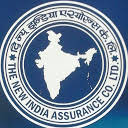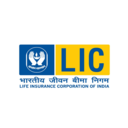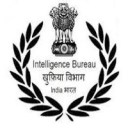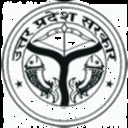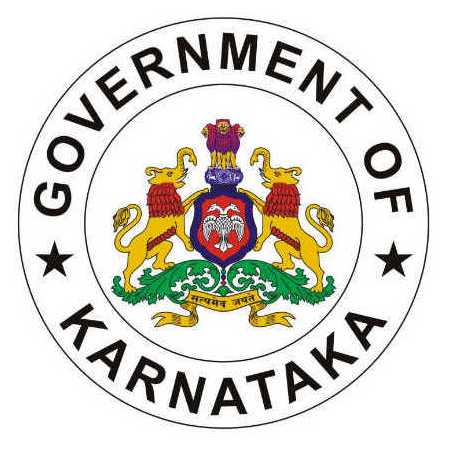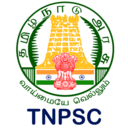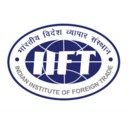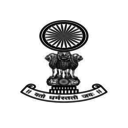JAIIB Syllabus: The bankers who are going to appear in the JAIIB exam must be very well aware of JAIIB Exam Syllabus. If we talk about JAIIB Subjects, there are 4 subjects. The JAIIB exam consists of 4 subjects which are Indian Economy & Indian Financial System, Principles & Practices of Banking, Accounting & Financial Management for Bankers and Retail Banking & Wealth Management. In this blog, you will get the detailed JAIIB Syllabus and Exam Pattern, so read on the complete blog.
JAIIB Subjects
The JAIIB Subjects that are included in the syllabus are given below. The exam date for all the papers is different in both the cycles.
- Indian Economy & Indian Financial System
- Principles & Practices of Banking
- Accounting & Financial Management for Bankers
- Retail Banking & Wealth Management
Attempt Free JAIIB Mock Test
JAIIB Exam Syllabus Overview
The exam duration will be 2 hours, and it will be conducted twice in a year, though the frequency may change based on industry needs. Check out the JAIIB Exam Syllabus overview below:
| Aspect | Details |
|---|
| Organization Name | Indian Institute of Banking and Finance (IIBF) |
| Exam Name | JAIIB 2025 |
| JAIIB Eligibility | Members Only |
| Exam Conducted | Twice in a year |
| JAIIB Subjects | - Indian Economy & Financial System
- Accounting & Financial Management of Banking
- Principles & Practices of Banking
- Retail Banking & Wealth Management |
| Total Questions | 400 (100 questions from each subject) |
| Total Marks | 400 |
| Time Duration | 2 hours for each subject |
| Negative Marking | No negative marking for wrong answers |
| Official Website | IIBF |
Attempt JAIIB Previous Year Papers
JAIIB Syllabus 2025
JAIIB syllabus is made for candidates working in the banking sector and who wants to appear for the exam. It's important to note that this recruitment is only open to individuals currently employed in the banking industry and is not available to the general public. The candidates must prepare every topic given in the syllabus.
JAIIB IE & IFS Syllabus 2025
JAIIB Paper 1 consists of a total of 4 modules given below.
| Module | Title | Key Topics |
|---|
| A | Indian Economic Architecture | - Indian economy overview and evolution - Economic planning & sectors - Priority sector & MSMEs - Infrastructure & globalisation - Economic reforms & foreign trade - International orgs & SDGs - Economic issues (e.g., poverty, inequality) |
| B | Economic Concepts Related to Banking | - Micro & macroeconomics - Supply & demand - Inflation & interest theories - Business cycles - Monetary & fiscal policy - National income & budget concepts |
| C | Indian Financial Architecture | - Structure of Indian financial system - Banking regulations - DFIs, NBFCs, MFIs, insurance - Role of RBI, SEBI, IRDA, PFRDA - Banking reforms |
| D | Financial Products and Services | - Financial, money, capital & forex markets - Derivatives, factoring, merchant banking - Venture capital, leasing - Mutual funds, insurance, pensions - Para banking, REITs & InvITs |
Check out the module wise detailed JAIIB IE&IFS Syllabus
JAIIB PPB Syllabus 2025
JAIIB Paper 2 explores the principles and practices of banking. It is further divided into four modules which are:
| Module | Title | Key Topics |
|---|
| A | General Banking Operations | - Banker-customer relationship - AML/KYC & account operations - Cash, clearing & cheque handling - NRI & forex accounts - Payment systems (NEFT, RTGS, etc.) - Customer service & grievance redressal |
| B | Functions of Banks | - Lending principles & credit types - Loan appraisal & documentation - NPAs & recovery laws (SARFAESI, IBC) - Guarantees, LCs, bill finance - Priority sector & MSME finance - Govt schemes & SHG linkage |
| C | Banking Technology | - Core banking & digital platforms - Alternate delivery channels - EFT systems & NPCI initiatives - IT security & cyber frauds - FinTech, e-RUPI, RegTech, SupTech |
| D | Ethics in Banks & Financial Institutions | - Business ethics in banking - Ethical dilemmas & workplace conduct - Whistleblowing, employee responsibilities - Tech ethics, privacy & data security |
Check out the module wise detailed JAIIB PPB Syllabus
JAIIB AFM Syllabus 2025
The detailed syllabus of JAIIB Paper 3 AFM are as follows:
| Module | Title | Key Topics Covered |
|---|
| A | Accounting Principles and Processes | - Accounting standards (Ind AS, IFRS, GAAP) - Basic accountancy & double-entry system - Cash/ledger books, BRS, trial balance - Depreciation methods, capital vs revenue - Bills of exchange, back-office reconciliation - Audit types (concurrent, internal, statutory) |
| B | Financial Statements & Core Banking Systems | - Balance sheet equation - Preparation of final accounts - Company accounts (share capital, Ind AS) - Cash flow & fund flow statements - Bank-specific P&L and balance sheets - Core banking systems, digital accounting |
| C | Financial Management | - Financial decision-making & objectives - Ratio analysis, financial math (interest, annuities, YTM) - Forex arithmetic, capital structuring, WACC - Term loan/project finance, lease financing - Working capital, factoring, derivatives (futures, swaps, options) |
| D | Taxation & Fundamentals of Costing | - Income tax, TDS, GST basics - Cost & management accounting concepts - Job, batch, contract, process & service costing - Standard costing & variance analysis - Marginal costing & break-even analysis - Budgeting systems & controls |
Check out the module wise detailed JAIIB AFM Syllabus
JAIIB RBWM Syllabus 2025
The detailed JAIIB RBWM Syllabus are as follows:
| Module | Title | Key Topics Covered |
|---|
| A | Retail Banking | - Characteristics, evolution, challenges in retail banking - Business models and profitability metrics - Distinction from corporate/wholesale banking - Branch-level profitability & efficiency improvement |
| B | Retail Products and Recovery | - Customer needs (Maslow's Theory) - Product development & life cycle - Retail liability & asset products (FD, RD, SB, Current, Home/Auto/Edu loans) - Credit & debit cards, digital payments (NEFT, RTGS, BBPS, AePS) - Digitisation & AI in retail banking - Loan recovery (SARFAESI, DRT, Lok Adalat), MIS, Securitisation |
| C | Support Services – Marketing of Banking Services/Products | - Marketing mix & delivery channels (branches, ATMs, internet/mobile banking) - Delivery models (DSAs, tie-ups) - CRM strategies, service standards (BCSBI code) - MKIS (Marketing Information Systems) & its components |
| D | Wealth Management | - Wealth management structure, process & products - Investment management, portfolio services, mutual funds - Tax planning (old vs new regime, capital gains, trusts, wills) - Other financial services (insurance, depository, factoring) - Home loans (appraisal, documentation, monitoring, frauds) - Real estate valuation, reverse mortgage, mortgage advice |
Check out the module wise detailed JAIIB RBWM Syllabus
JAIIB Syllabus 2025 PDF Download
Candidates can click on the link given below and download the JAIIB Syllabus 2025 PDF. You can also take a printout of the syllabus so that you can make your preparation systematic.
Download JAIIB Syllabus 2025 PDF
JAIIB Exam Pattern 2025
The JAIIB Exam 2025 is conducted in an online mode with no negative marking. Each paper is for 100 marks, and candidates are given 2 hours to complete each paper.
| Feature | Details |
|---|
| Total Questions | 100 objective-type MCQs per paper |
| Total Marks | 100 marks per paper |
| Case-Based Questions | Yes, included in all subjects |
| Numerical Input Questions | Present in papers like AFM |
| Exam Mode | Online (CBT) |
| Negative Marking | No negative marking |
| Assessment Areas | Basic knowledge, application skills, case handling, and numerical aptitude |
JAIIB Exam Structure 2025
Each of the four compulsory papers includes 100 multiple choice questions worth 100 marks.
| Paper Name | Total Marks | Exam Duration | Passing Marks |
|---|
| Indian Economy & Indian Financial System (IE & IFS) | 100 | 2 Hours | 50 (or 45 with 50% aggregate) |
| Principles & Practices of Banking (PPB) | 100 | 2 Hours | 50 (or 45 with 50% aggregate) |
| Accounting & Financial Management for Bankers (AFM) | 100 | 2 Hours | 50 (or 45 with 50% aggregate) |
| Retail Banking & Wealth Management (RBWM) | | | |
Explore JAIIB Courses





